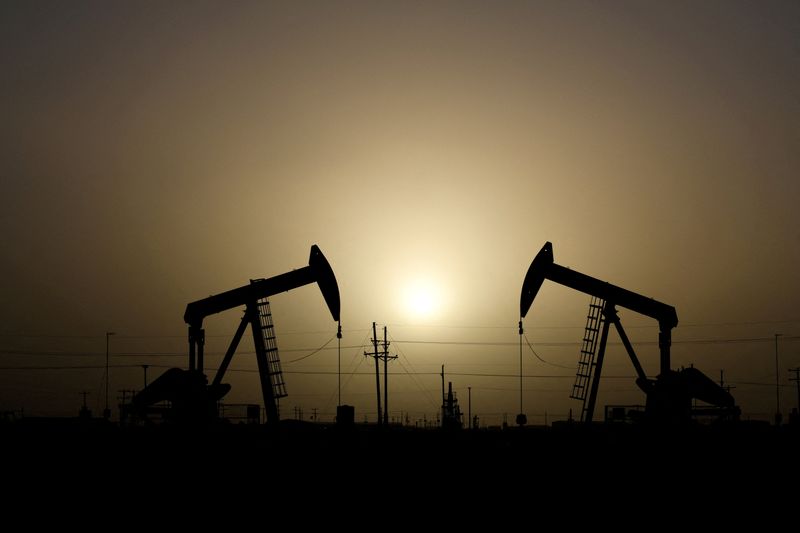By Stephanie Kelly
NEW YORK (Reuters) -Oil prices edged higher on Tuesday as a U.S. government agency projected a rosier outlook on the economy, but bearish data on China's crude imports and exports weighed.
Brent crude futures gained 83 cents to settle at $86.17 a barrel. U.S. West Texas Intermediate crude rose 98 cents to $82.92.
Both contracts had fallen by $2 earlier in the session, but prices reversed course after a monthly report from the U.S. Energy Information Administration projected gross domestic product growth to rise by 1.9% in 2023, up from 1.5% in a previous forecast. [EIA/M]
The EIA also expects Brent crude oil prices to average $86 in the second half of 2023, up about $7 from the previous forecast.
U.S. crude production is expected to rise by 850,000 barrels per day (bpd) to a record 12.76 million bpd in 2023, the report added, overtaking the last peak of 12.3 million bpd in 2019.
Crude prices have been rising since June, primarily because of extended voluntary cuts to Saudi Arabia's production as well as increasing global demand, the EIA said.
"We expect these factors will continue to reduce global oil inventories and put upward pressure on oil prices in the coming months," the EIA added.
Weighing on prices on Tuesday, however, China's July oil imports were down 18.8% from the previous month to the lowest daily rate since January, but still up 17% from a year earlier.
Overall, China's imports contracted by 12.4% in July, far steeper than the expected 5% drop. Exports fell by 14.5%, compared with a fall of 12.5% tipped by economists.
Despite the gloomy data, some analysts were still positive on China's fuel demand outlook for August to early October.
The peak season for construction and manufacturing activity starts in September and gasoline consumption should benefit from summer travel demand, said CMC Markets analyst Leon Li. Demand is expected to decrease gradually after October, he added.
Last week's decision by Saudi Arabia to extend a voluntary output cut of 1 million bpd into September, despite Brent rising above $80, suggested Riyadh might be targeting a higher price than $80, said Vivek Dhar, mining and energy commodities strategist at Commonwealth Bank of Australia.
Still, some analysts were sceptical about how much supply the cuts were actually taking off the market, as other members of the Organization of the Petroleum Exporting Countries such as Libya and Venezuela have increased production, said Andrew Lipow, president at Lipow Oil Associates in Houston.
"The production cuts have been far less than the announced quota cuts," Lipow said.
U.S. crude oil stocks rose last week, while gasoline and distillate stockpiles dropped, according to market sources citing American Petroleum Institute figures on Tuesday. [API/S]

Crude stocks rose by about 4.1 million barrels in the week ended Aug. 4, according to the sources, who spoke on condition of anonymity. Gasoline inventories fell by about 400,000 barrels, while distillate inventories fell by about 2.1 million barrels.
U.S. government data on stockpiles is due on Wednesday.